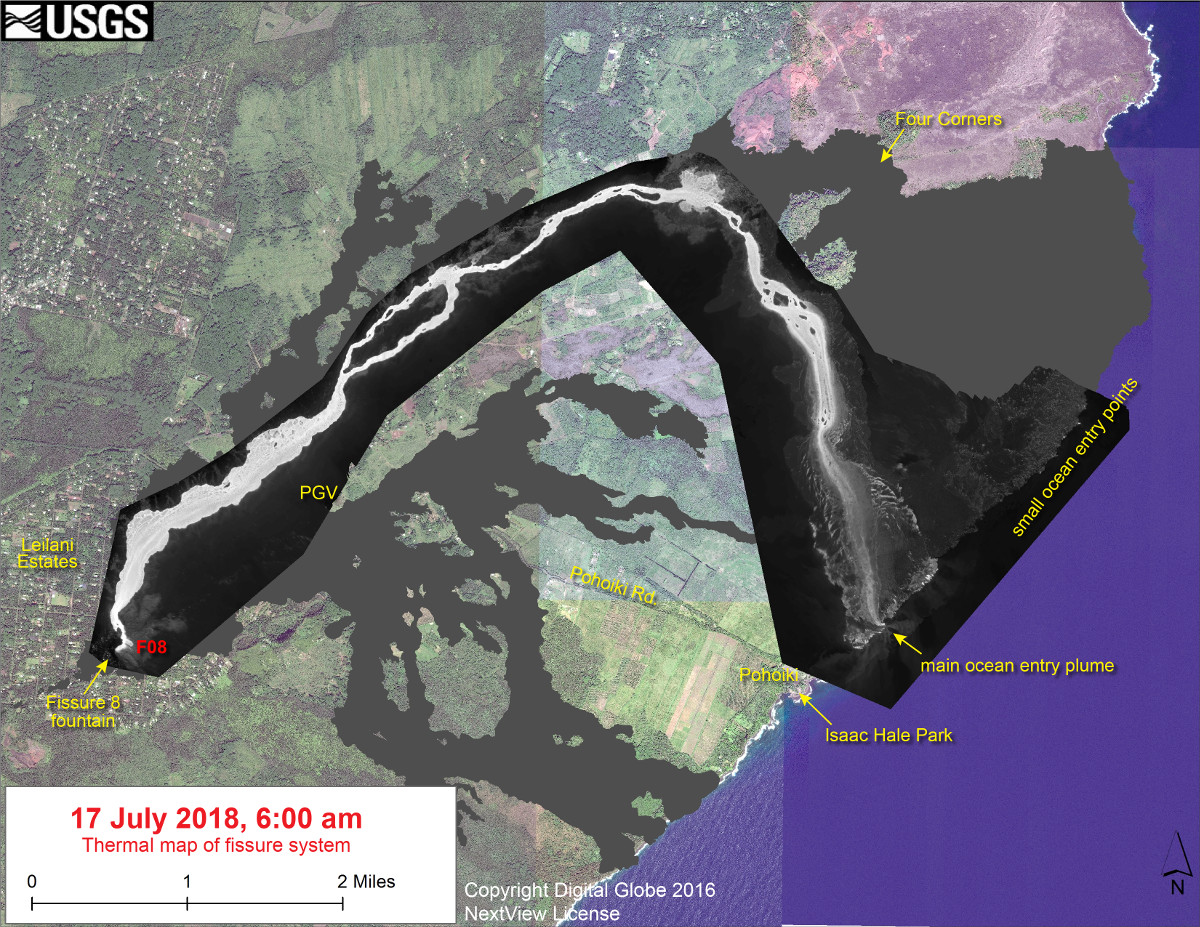
(USGS) This thermal map shows the fissure system and lava flows as of 6 am on Tuesday, July 17. The fountain at Fissure 8 remains active, with the lava flow entering the ocean. The dominant ocean entry was on the new lobe that reached the sea near Ahalanui last week. The black and white area is the extent of the thermal map. Temperature in the thermal image is displayed as gray-scale values, with the brightest pixels indicating the hottest areas. The thermal map was constructed by stitching many overlapping oblique thermal images collected by a handheld thermal camera during a helicopter overflight of the flow field. The base is a copyrighted color satellite image (used with permission) provided by Digital Globe.
(BIVN) – During Tuesday’s public meeting concerning the eruption of Kilauea Volcano held at the Pahoa High School cafeteria, USGS Hawaiian Volcano Observatory deputy scientist-in-charge Steve Brantley compared the ongoing activity to past events, calling it “unprecedented in scope and size” in the past 200 years.
The summit of Kilauea Volcano has already seen the largest collapse in volume in the past 200 years, Brantley said, adding that the activity thus far is similar to activity observed in the 19th century.
On the lower East Rift Zone, where Fissure 8 is currently sending a channel of lava through Leilani Estates and into the ocean, Brantley said we are seeing the most voluminous eruption in over 200 years.
We are also seeing the highest eruption rate, and the highest SO2 emission rates ever measured at Kilauea, Brantley said.
The ongoing eruption on the lower East Rift zone has lasted for 80 days, so far, and erupted an estimated 450 million cubic meters (mcm) of lava. Brantley compared those numbers to three other eruption events on the lower East Rift Zone:
- 1840: 26 days, 205 mcm
- 1955: 88 days, 81 mcm
- 1960: 37 days, 122 mcm
The presentation also touched upon recent changes to the lava channel, the slow southward advance of lava along the coast in the direction of Pohoiki, and present activity at the summit.

by Big Island Video News9:54 pm
on at
STORY SUMMARY
PAHOA, Hawaii - The current eruption activity on Kilauea is unprecedented in scope and size in the past 200 years, the USGS Hawaiian Volcano Observatory says.